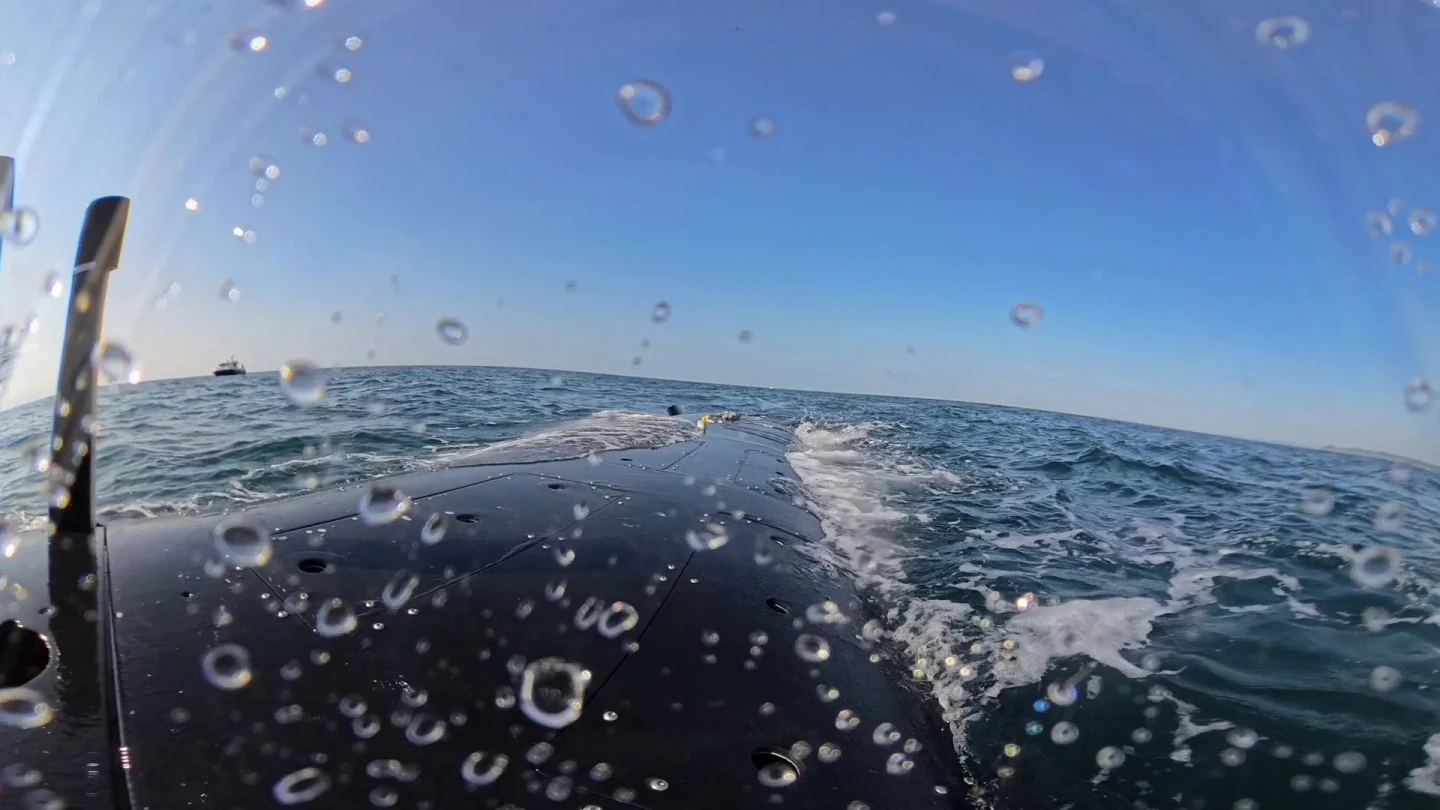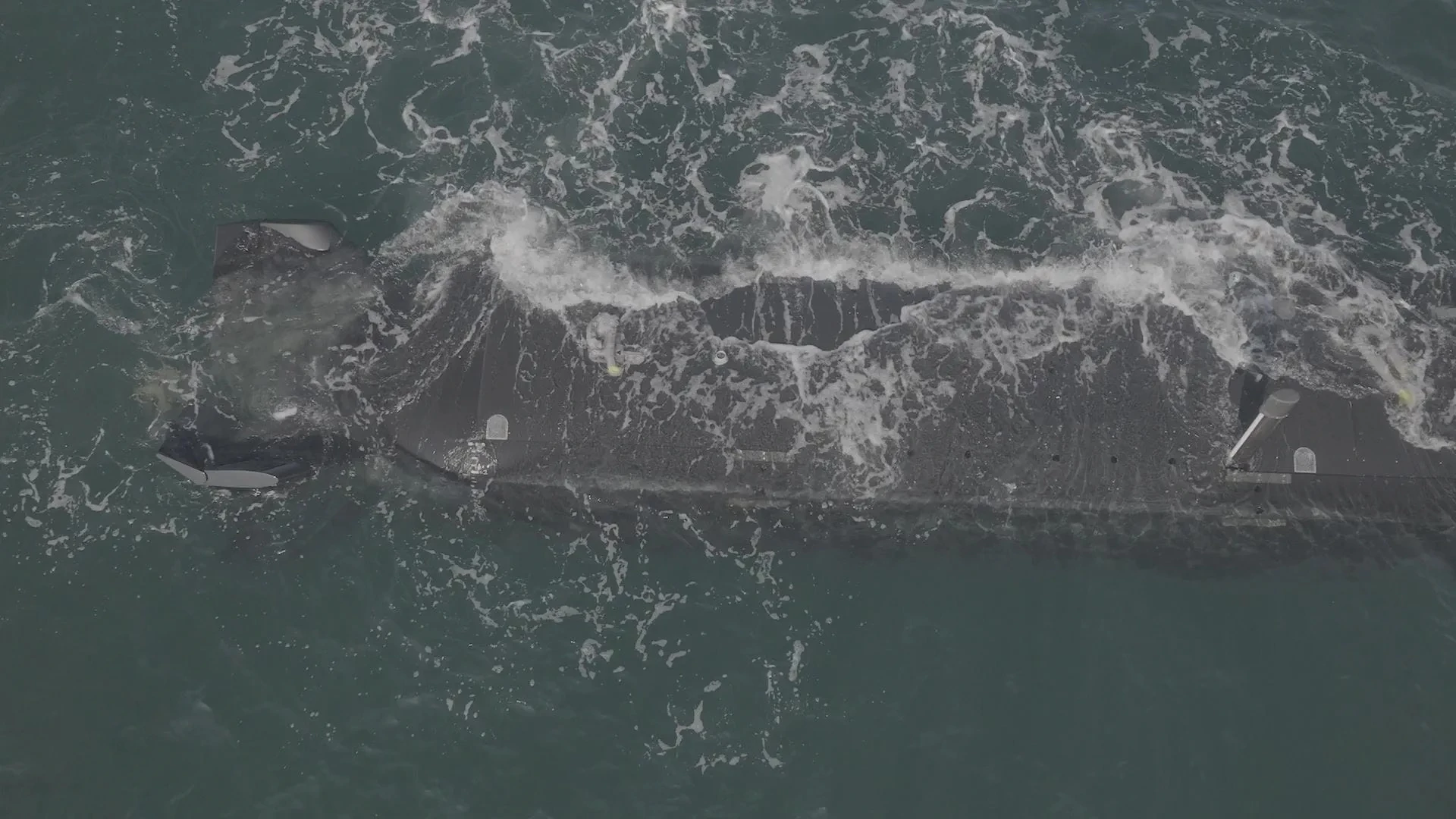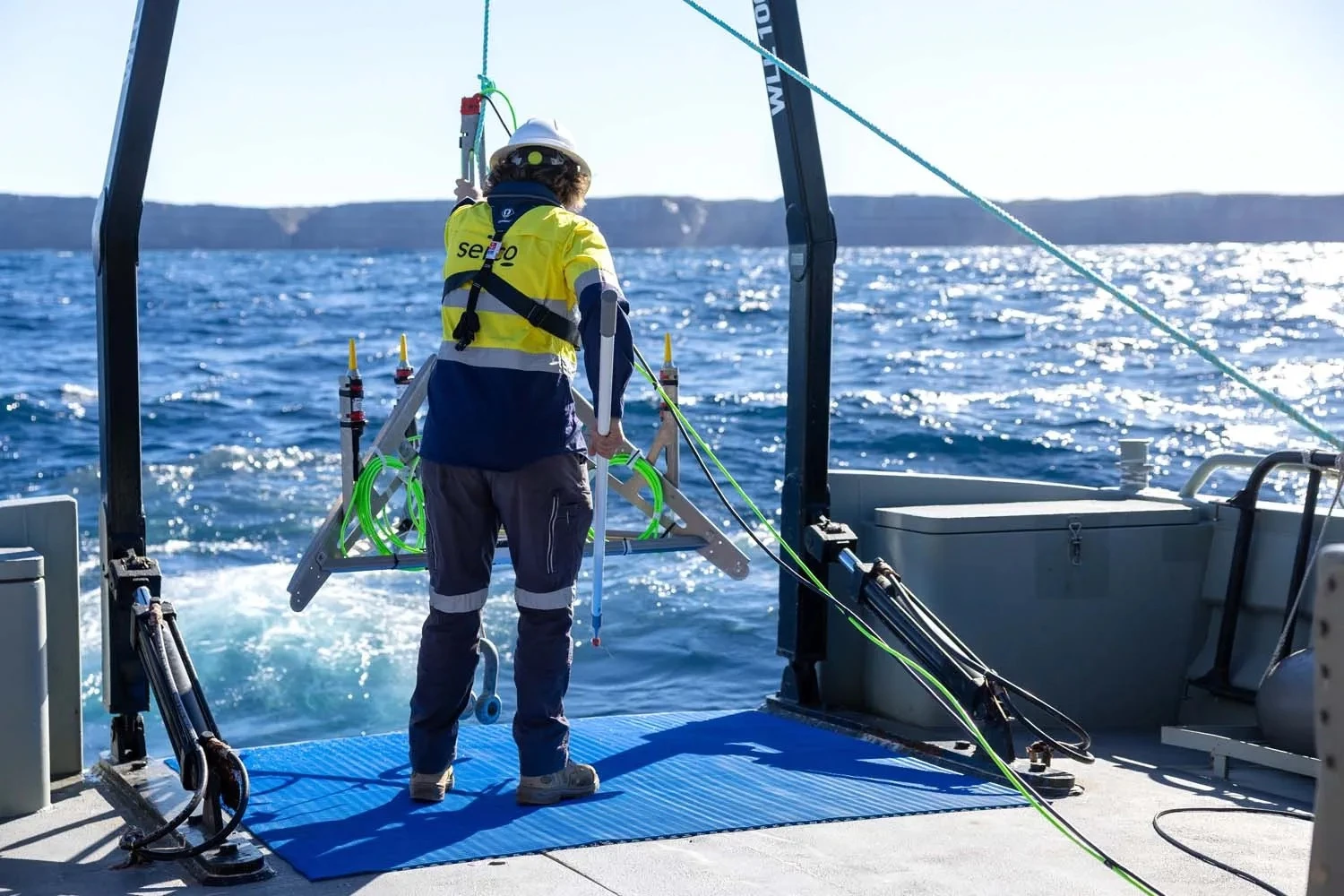The prototype Royal Navy robotic submarine XV-Excalibur has provided a glimpse of the fleet of the future by patrolling the waters at HMNB Devonport in Plymouth, England while controlled from a command center in Australia 10,000 miles (16,000 km) away.
Part of Project Cetus and built by Plymouth-based MSubs, the Extra-Large Uncrewed Underwater Vessel (XLUUV) XV-Excalibur was unveiled in May as a demonstrator platform to explore how best to use large robotic submarines to augment the Navy's fleet of nuclear attack boats. Under a two-year test program, Excalibur will study how such submarines can be employed in anti-submarine warfare, seabed warfare, and intelligence, surveillance, and reconnaissance.
By conventional submarine standards, Excalibur seems a tad small. In fact, it's about the size of the Navy's X-Craft midget submarines used during the Second World War, with a length of 39 ft (12 m), a beam of 7 ft (2 m), and a displacement of 19 tonnes – and speed, range, and propulsion system still on the classified list.

However, what it lacks in size, it makes up for in sophistication. Since it has no crew or the gear to support them, the interior can be packed to the gills with equipment, sensors, and payload modules to suit particular missions. The only key item it lacks is armament because of its testbed status, but it's still the most advanced uncrewed submarine in Europe.
The recent test under the auspices of the UK/US/Australia Maritime Big Play exercise was carried out in July 2025 as part of the biannual Exercise Talisman Sabre military exercises with 19 nations participating, including Australia, Canada, Fiji, France, Germany, India, Indonesia, Japan, the Netherlands, New Zealand, Norway, Papua New Guinea, the Philippines, the Republic of Korea, Singapore, Thailand, Tonga, the United Kingdom, and the United States, with Brunei and Malaysia attending as observers.
Aside from using Australia to demonstrate the ability to give commands to the autonomous submarine from half a world away, Project Cetus is part of the AUKUS Pillar II treaty, which shares submarine technology and other developments between the US, Britain, and Australia while aiding Australia in developing its own ability to build and operate its own nuclear AUKUS Class attack subs.
"This exercise demonstrates how we are exploiting the learning from our experimentation, by applying it to the Royal Navy’s growing arsenal of Uncrewed Underwater Vehicles; taking experimentation into the hands of the war fighter," said Captain Keith Taylor, RN, the UK Senior Responsible Owner for Maritime Big Play.
Source: Royal Navy








